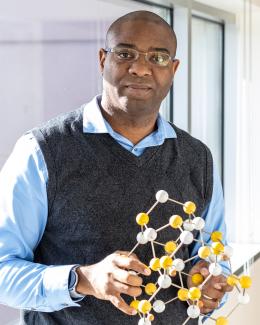Abstract
The infinite layer structure type has been known to host high-temperature superconductivity since the discovery of Ca0.86Sr0.14CuO2, yet little progress has been made to synthesize many analogs. Here, using SrFeOx as a prototype system, we explore the thermodynamic obstacles behind the scarcity of 3d elements adopting the infinite layer structure type. In this context, synthetic considerations to achieve the ABO3 to ABO2 transformation are discussed. Specifically, we demonstrate that the conventionally reported topochemical reduction can result in hydride incorporation into SrFeO2, causing a decrease in the magnetic ordering temperature of the infinite layered oxide. First-principles simulations further confirm that the incorporation of H is necessary for stabilizing the SrFeO2 phase by decreasing the thermodynamic cost of individual steps required to transform SrFeO3 into SrFeO2, and is the driving factor behind the changes in magnetic exchange interactions that ultimately change the Néel temperature (TN). Additionally, inspired by recent reports of superconductivity in another low-dimensional oxide Nd0.8Sr0.2NiO2, Sr0.95Nd0.05FeO2 was synthesized via a more traditional topochemical reduction procedure. Both physical characterization and accompanying density-functional theory calculations show that this A-site doping can have similar effects on AFeO2 stability and magnetic ordering temperatures as with the incorporation of hydrogen. Ultimately, these results suggest that charge doping either through the incorporation of H or A-site substitution may be fruitful routes in tuning stability and magnetic properties, with direct consequences on superconducting behavior.




